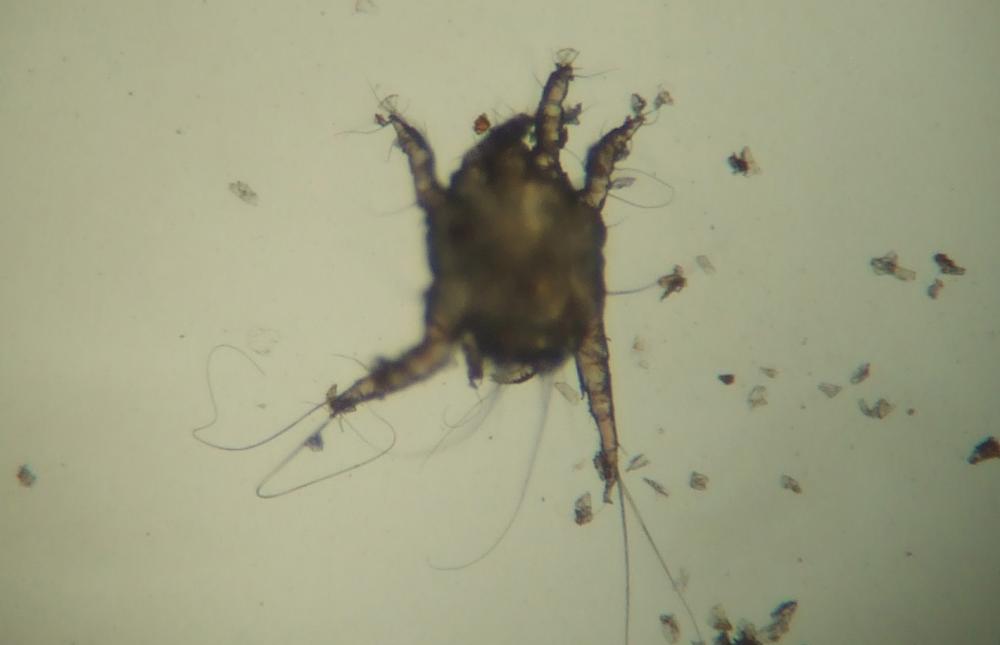
Ear mites in dogs
- Ear mites are a common parasite in dogs, although more likely to occur in cats
- Most ear infections in dogs are not caused by ear mites but are often mistaken to be
- Ear mites can rarely be seen by the naked eye and diagnosis needs to be confirmed by a vet
- A range of treatments are available but flea prevention often also protects pets from ear mites
What are ear mites?
Ear mites are a fairly common parasite in both dogs and cats. The mites are microscopic and infectious organisms which are like tiny white dots in appearance, but can barely be seen with the naked eye. Detection under a microscope is normally required to confirm their presence.
Ear mites live on the skin of the ear canal and feed off ear wax and skin oils. An adult normally lives for approximately two months, but can multiply quickly with eggs taking just four days to hatch and a further three weeks to develop into an adult mite ready to breed.
How do I know if my dog has ear mites?
An ear mite infection will cause your dog’s ears to itch, which often results in them shaking their head excessively, or scratching at their ears with their paws. Ear mites can also produce wax and irritation, so your pet’s ears may well look red and inflamed. Typically, ear mites will also cause a dry black ear discharge. There may also be an unusual odour.
But irritation in a dog’s ear is more often than not caused by allergies leading to infections other than ear mites, so it’s crucial that you get your dog to the vets for a proper diagnosis – especially since the parasites are so difficult to detect with the naked eye. Vets will normally confirm a diagnosis of ear mites using an otoscope to look inside the ear. Without visiting the vet, many owners incorrectly assume that their dog has ear mites when they are, in fact, suffering from a bacterial or yeast ear infection; this can lead to weeks of inappropriate treatment and the condition worsening.
How do dogs catch ear mites?
Ear mites transfer between animals – or ‘hosts’ – through close physical contact.
Are ear mites contagious to other pets?
Yes, ear mites are contagious to other dogs and cats in the household. Even if other pets aren’t showing symptoms of ear mites, it’s essential that they are also treated at the same time. Cats are the most prone to catching ear mites due to their lifestyle habits.
Can humans catch ear mites from pets?
Only in extremely rare cases, dog owners have been known to develop skin rashes if their pet has ear mites. The ear mites that infect dogs are different from the parasite affecting humans.
What treatment is there for ear mites?
Many spot on flea treatments also prevent and treat ear mites, and - if recommended by your vet - this is by far and away the easiest way to protect your pet from the parasites. One or two applications is usually enough and they are a lot less stressful for your pet – and for you – than ear drops.
Although spot on treatments are the most popular form of treatment, ear drops are also available. Some of these require at least three weeks of treatment as the medication cannot kill the eggs of the parasites, which take 21 days to develop into adult mites. If using these treatments, it’s therefore crucial that you use them, as prescribed, for the recommended time period. Other topical treatments only need to be used for 10 to 14 days and are much stronger, so kill the eggs as well as the adult mites and include medication to tackle the infection caused by the parasites.
Always consult your vet on the best and most suitable treatment to use.


Donate today
We can’t provide pet advice without your support. Your donations allow our experts to create advice that is accurate and up to date. If you found this page useful, please help us to create more pet advice by donating.

Donate today
We can’t provide pet advice without your support. Your donations allow our experts to create advice that is accurate and up to date. If you found this page useful, please help us to create more pet advice by donating.






